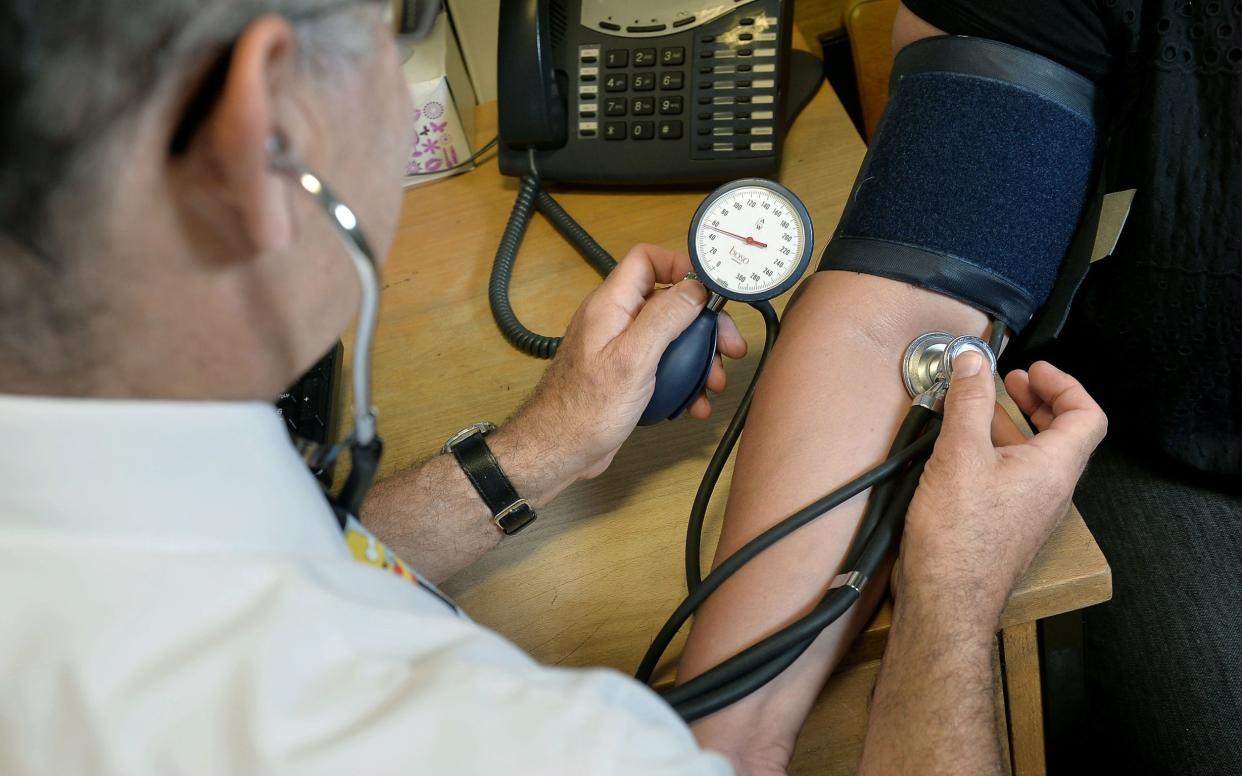Midlife blood pressure explained: what’s normal, when to worry and what to do

From October, people over the age of 40 will be offered free blood pressure checks at their local pharmacies. This quick and simple health check could prevent 3,700 strokes and 2,500 heart attacks each year – saving 2,000 lives a year – according to the NHS.
The thinking behind the new initiative is this: around a third of UK adults have high blood pressure, but more than five million of them are not even aware of it.
Given that blood pressure can be raised or lowered with lifestyle changes, people who are found to have high readings will be offered advice from pharmacists. They will also be referred to their GP, who may also offer them medication.
“More high street checks for blood pressure will mean more rapid detection of killer conditions and quicker treatment for patients who need it,” said Professor Stephen Powis, NHS national medical director for England. “Pharmacies are in the heart of communities and ideally placed to provide these convenient checks, so if you are worried about your health, please do get tested – it could save your life.”
So what is blood pressure, and why is it such a crucial indicator of health? We take a look below.
What is blood pressure?
Blood pressure is a measure of how hard your body has to work to pump blood around your body. If you have high blood pressure, then your heart is having to push harder.
Blood pressure readings are given in two figures, such as 100/70mmHg. This is a measurement of two things: the systolic pressure (the pressure when your heart pumps blood out), and the diastolic pressure (the pressure when your heart is between beats). The systolic pressure will always be listed first: so, in the reading 100/70mmHg, 100 is the systolic pressure and 70 is the diastolic pressure.
What’s a healthy blood pressure?
Ideal blood pressure is between 90/60mmHg and 120/80mmHg, according to the NHS. High blood pressure is 140/90mmHg or above, and low is 90/60mmHg or under.
You can get your blood pressure tested at your GP, or on the pharmacy scheme when it rolls out. But for some people with what’s known as “white coat syndrome”, it may be better to test themselves at home. For people who feel anxious around doctors and other health professionals, blood pressure readings taken in a medical setting might look artificially high because they are nervous. Measuring blood pressure at home may therefore get a more accurate result.
What causes high blood pressure?
A variety of things can cause hypertension. Among them are lifestyle factors like drinking too much, smoking, eating too much salt, not eating enough fruit and vegetables and being inactive. Being overweight can also increase your risk, as can not getting enough sleep.
However, non-lifestyle factors can also increase your odds of getting hypertension, including having a family history of high blood pressure. People living in deprived areas, and those who are black African or black Caribbean, also report an increased risk of high blood pressure, although the reasons for this are not fully clear.
Risk also increases as you age – being over 65 puts you in a higher-risk category.
What are the symptoms of high blood pressure?
If you have high blood pressure, you may experience a variety of symptoms. According to the British Heart Foundation, you should look out for: chest pains, feeling short of breath, dizziness, nosebleeds, blurred vision and headaches.
However, many people will be completely unaware that they have high blood pressure, hence why the testing scheme is being rolled out.
What about low blood pressure?
Having a blood pressure of below 90/60mmHg is classed as hypotension. In some people, it can be symptomless, but in others it can cause dizziness, fainting and weakness. It could be caused by genetics, or be a side effect of medication that you’re taking. It can also be triggered by pregnancy, when your circulation system expands rapidly. Your blood pressure should return to normal after giving birth. Hypotension can also be a symptom of dehydration.
Low blood pressure doesn’t increase your risk of heart attack and stroke like hypertension. It can often be helped by drinking plenty of water and making sure not to stand up too quickly. If you believe it’s related to your medication or a health condition such as diabetes, it’s recommended that you speak to your GP about it.
What can you do to lower high blood pressure?
If you have moderately high blood pressure (between 140/90mmHg and 160/100mmHg) and otherwise your health risks are low, then your doctor will recommend that you focus on improving your lifestyle. Getting more exercise, eating more fruit and vegetables, lowering your salt intake, drinking less and stopping smoking will all help. Prioritising getting enough sleep and slimming down if you’re overweight will help, too.
If your blood pressure is above 160/100mmHg or it’s over 140/90mmHg and you have other risk factors, then your doctor will offer you medication along with recommending lifestyle changes.
Medication works by relaxing your blood vessels to lower your blood pressure. It may come with side effects that are like symptoms of a cold, as well as dizziness.

